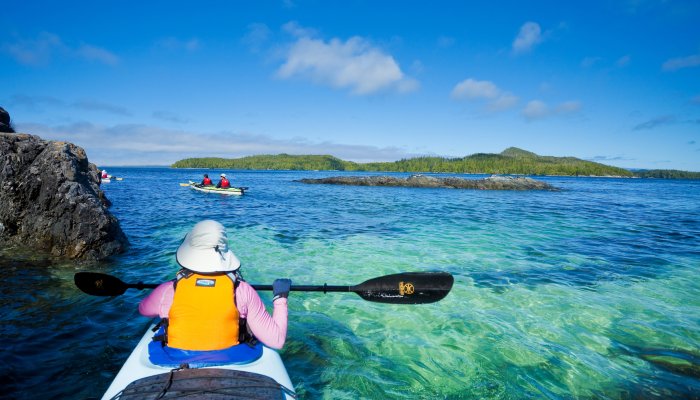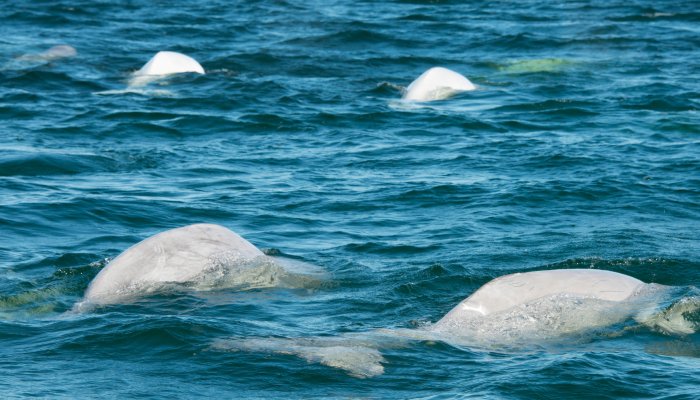10 Most Common Birds Seen in Antarctic
Aside from its iconic penguins (which you can learn more about here), Antarctica attracts a diverse array of other bird species, either as migratory or year-round residents. It’s a particularly wonderful destination for observing sea birds, with everything from huge albatrosses to endearing snow petrels regularly spotted.
In this guide, we’ll introduce 10 of the most common bird species you can see on our Antarctic cruises and highlight some of their unique characteristics and behaviors.
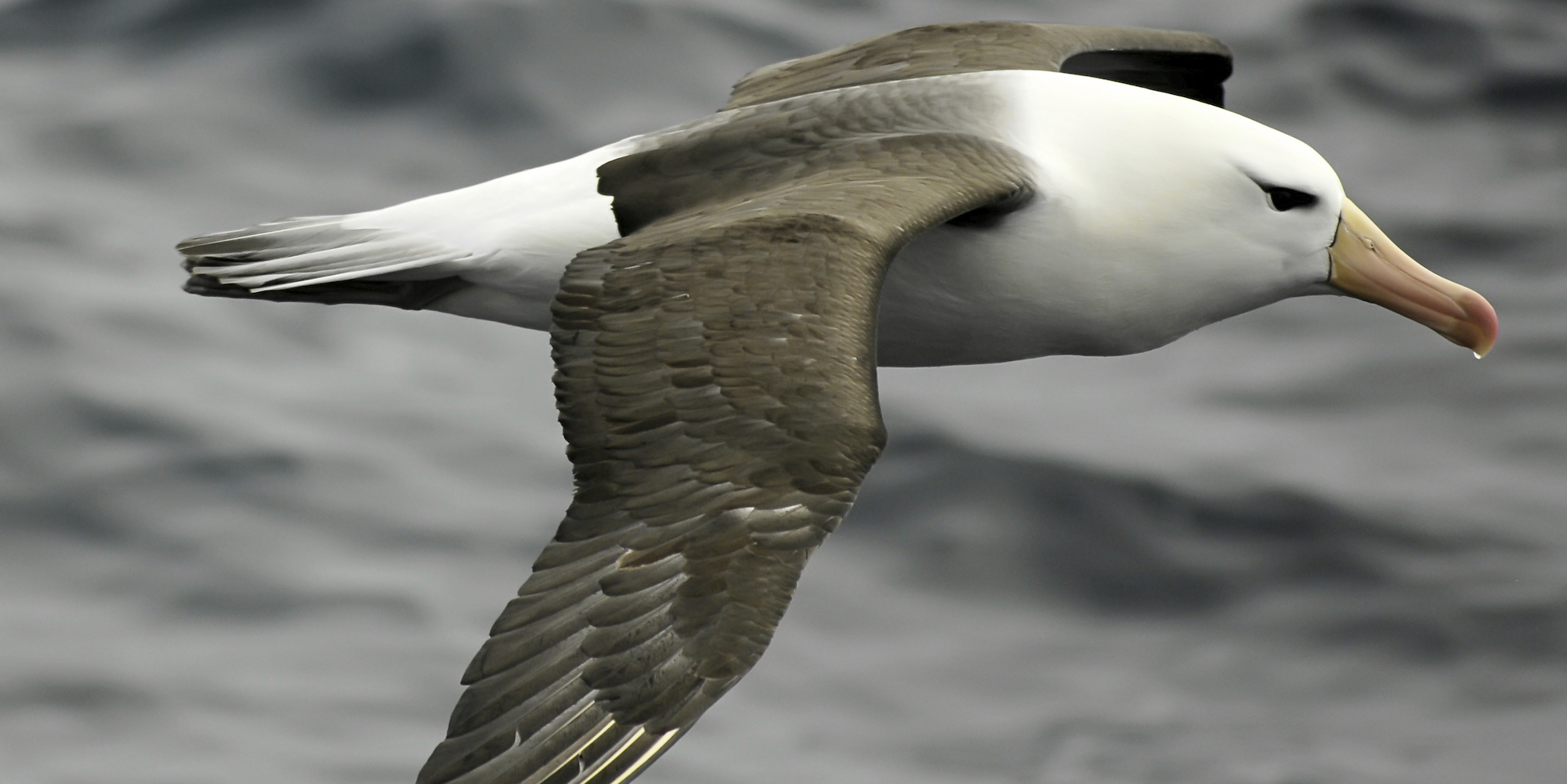
Wandering albatross (Diomedea exulans)
Of the many albatross species that migrate to Antarctica and the subantarctic each year, the wandering albatross is one of the most commonly seen. It is among the largest birds on Earth, with a wingspan that reaches more than 11 feet, making it the longest of any living bird. Wandering albatross are also noisy birds and have been observed grunting, whistling, and clapping their bills.
As one of the world’s most far-ranging birds, wandering albatross can cover more than 75,000 miles in a single year. They spend much of their life in flight and feed far out in the open ocean on small fish, crustaceans, and squid. Wandering albatross have one mate over their lifetime and breed every second year, with a single egg laid in large nests created on isolated islands. They can live for more than 50 years.
Antarctic tern (Sterna vittata)
Featuring a bright red bill and orange legs, the Antarctic tern can be found on small islands around Antarctica, as well as on its mainland. Despite being closely related to the Arctic tern, it doesn’t complete an annual transcontinental migration and prefers to stay close to its breeding sites throughout the year.
Antarctic terns are opportunistic feeders who mostly eat fish and Antarctic krill, with flocks of up to 100 birds gathering around large shoals. Both parents are responsible for incubating the eggs, which hatch during the summer months. Antarctic terns can be divided into six different subspecies, each of which is associated with a specific breeding site.
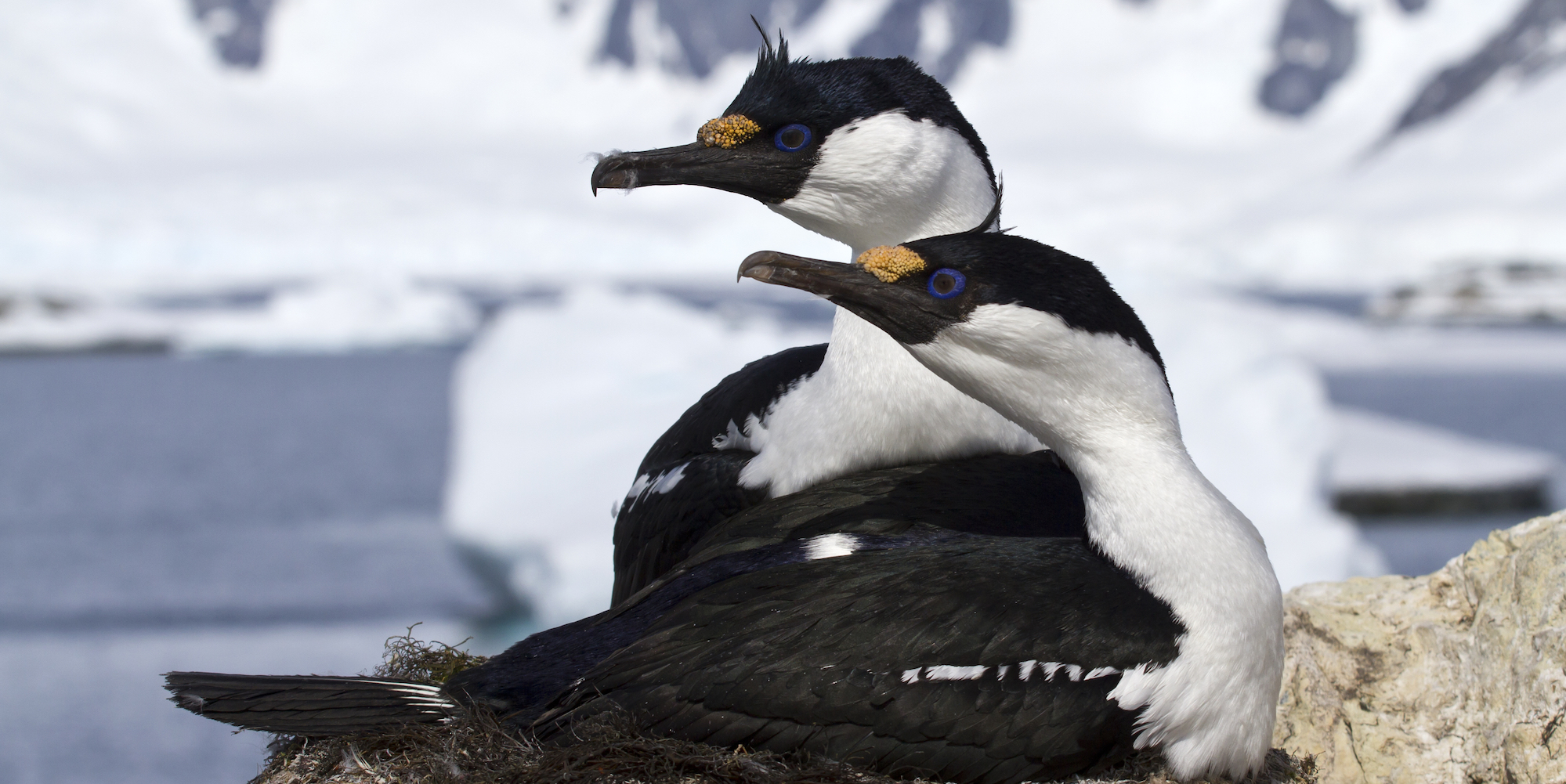
Antarctic shag (Leucocarbo bransfieldensis)
Often referred to as a blue-eyed shag, this cold-climate bird is the only species of the cormorant family found in Antarctica. It has a wingspan of up to 48 inches and grows up to 30 inches in height, with its black head and wings juxtaposed against white underparts. The blue-eyed shag takes its name from the blue skin that surrounds its eye.
Leucocarbo bransfieldensis reside not only on the Antarctic Peninsula but also on several subantarctic islands. Colonies are usually found along coastal shores and near packed ice, with the birds non-migratory and only moving short distances to find unfrozen waters. Antarctic shags are monogamous but are known to change partners the following season, with males using a “greeting display” to attract partners.
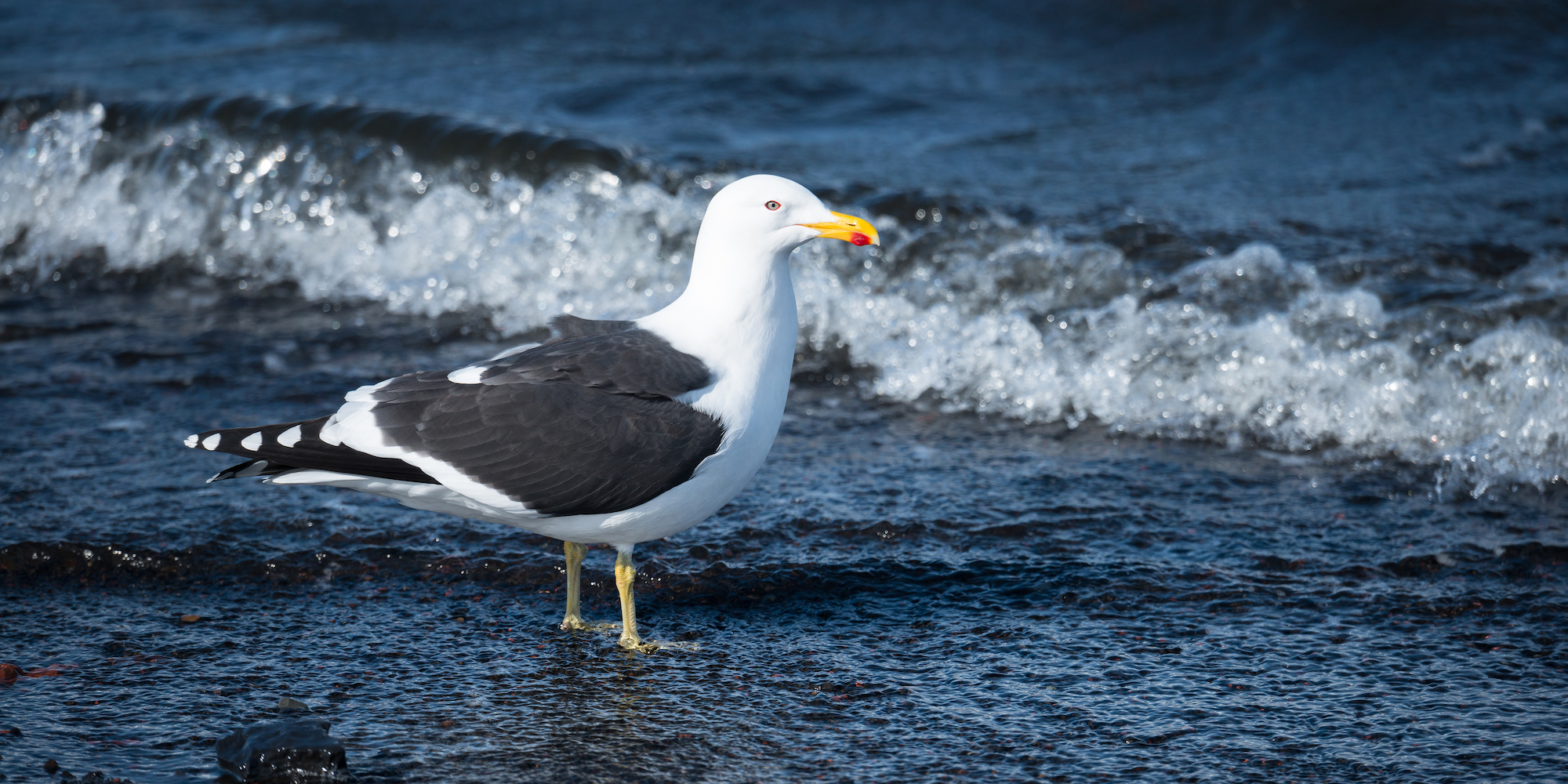
Kelp gull (Larus dominicanus)
Found throughout much of the Southern Hemisphere, the kelp gull can be divided into five subspecies, one of which (L. d. austrinus) resides in Antarctica. Its scientific name comes from the Dominican Order of friars, who are known for their black and white attire. The kelp gull’s black upper body against a white neck and underbelly was thought to resemble the friars’ habit.
Kelp gulls lay their eggs on subantarctic islands during November and December, with their bowl-like nests constructed from seaweed, shells, and sticks. While they are predominantly omnivores, mostly eating fish and crustaceans, kelp gulls are known to prey on other seabirds and their own eggs.
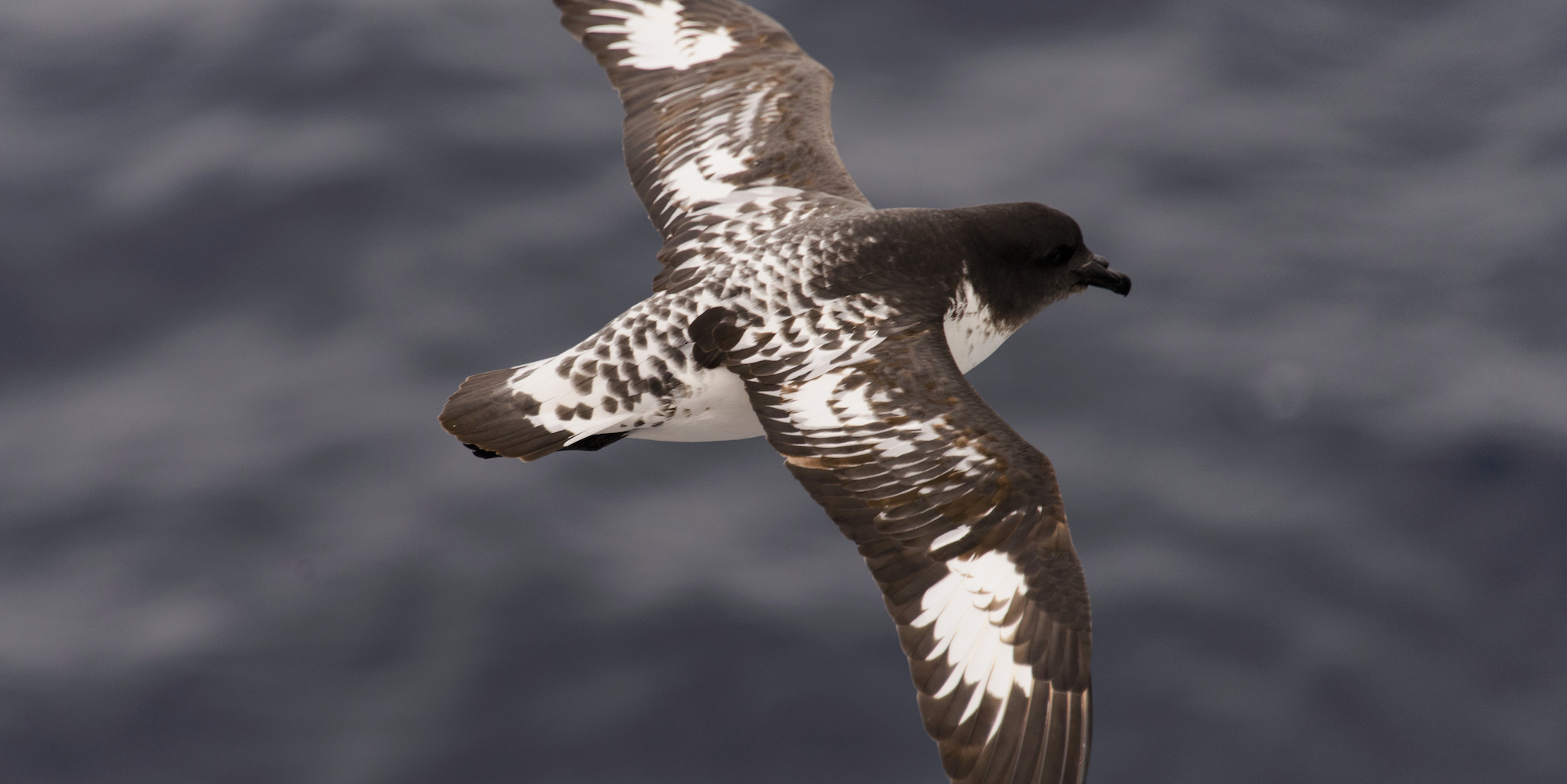
Antarctic petrel (Thalassoica antarctica)
Living and breeding in the Southern Ocean, Antarctic petrels can often be seen flying high above the continent’s icebergs or perched in massive flocks on ridges. They feature a brown head, neck, and back, with white wings and a tail that’s tipped with brown-black feathers. Antarctic petrels can have a wingspan of up to 43 inches and weigh around 24 ounces.
Antarctic petrels are most commonly observed in the Ross and Weddell Seas where they hunt for krill, fish, and squid by diving from both the surface and the air. While they prefer to nest on coastal cliffs and rocky islands, they have been found roosting well inland. Antarctic petrels breed during October and November, with their eggs hatching at the height of summer.
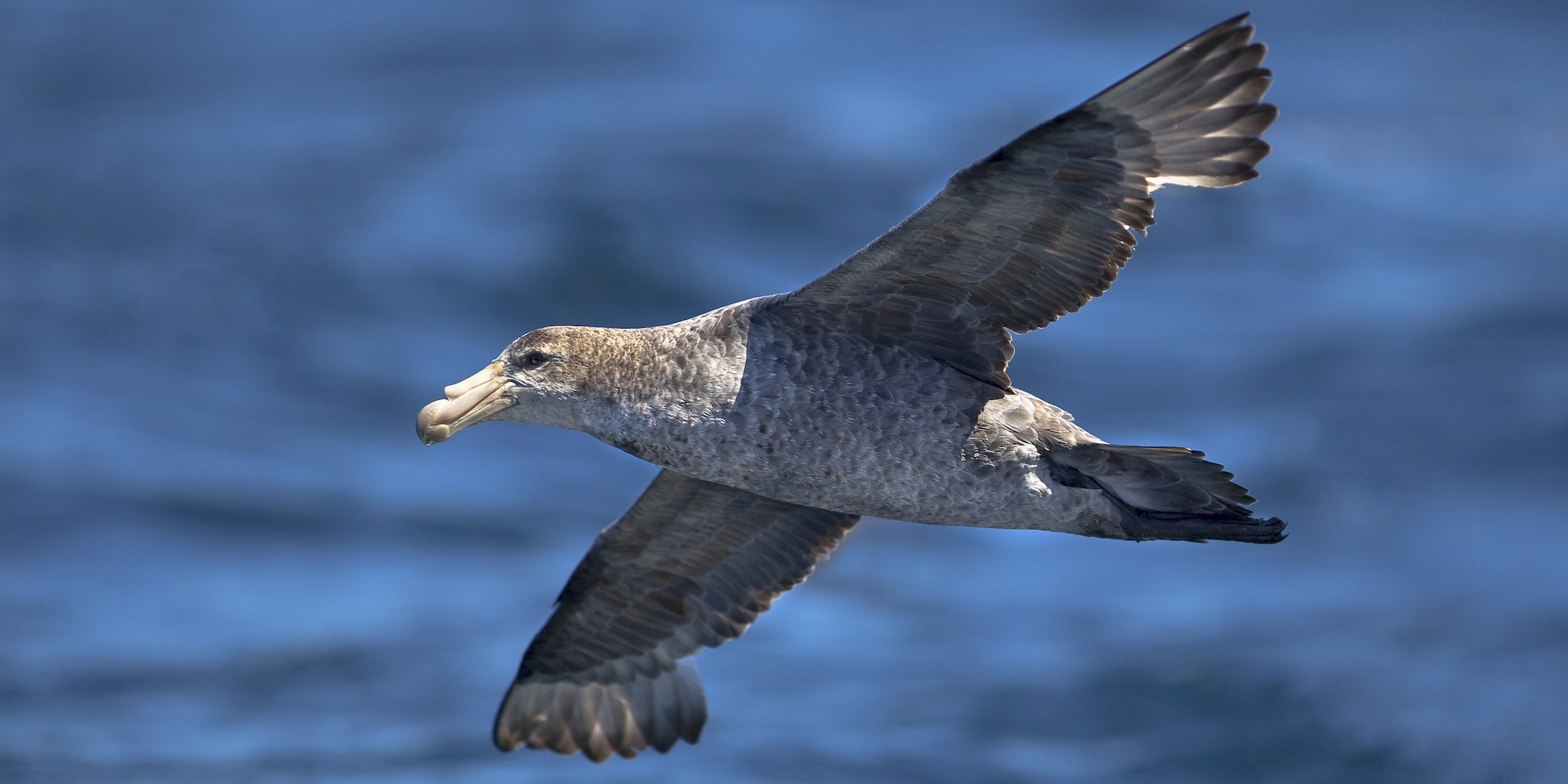
Cape petrel (Daption capense)
With a distinctive black and white upper body, Cape petrels breed around Antarctica and the subantarctic islands before migrating as far north as the Galapagos in the winter months. They have a much wider distribution area than Antarctic petrels and a global population that is estimated to be around two million birds.
Cape petrels feed mainly by diving for krill, although they have been known to follow ships and consume edible waste disposed overboard. Compared to other petrels, their colonies are relatively small, with a preference for coastal cliffs featuring overhanging rocks and crevices. Cape petrels lay a single egg and are known to defend their nests by spitting stomach oil at potential predators.
Southern giant petrel (Macronectes giganteus)
Also known as the Antarctic giant petrel, this large seabird can grow up to 40 inches, with a wingspan of more than six feet. Southern colonies are larger than their northern counterparts, in accordance with the ecogeographical rule described by Carl Bergmann. Two different color morphs can be observed, with the darker featuring a grey-brown body and a speckled chest while the lighter is almost completely white.
Southern giant petrels breed on the Antarctic mainland and subantarctic islands where they prefer ice-free rocky bluffs and plateau edges. Large populations can be found on the Falkland Islands, South Shetland, and Macquarie Island, with the breeding season beginning in October. In flight, they can be distinguished by their hunch-backed appearance.
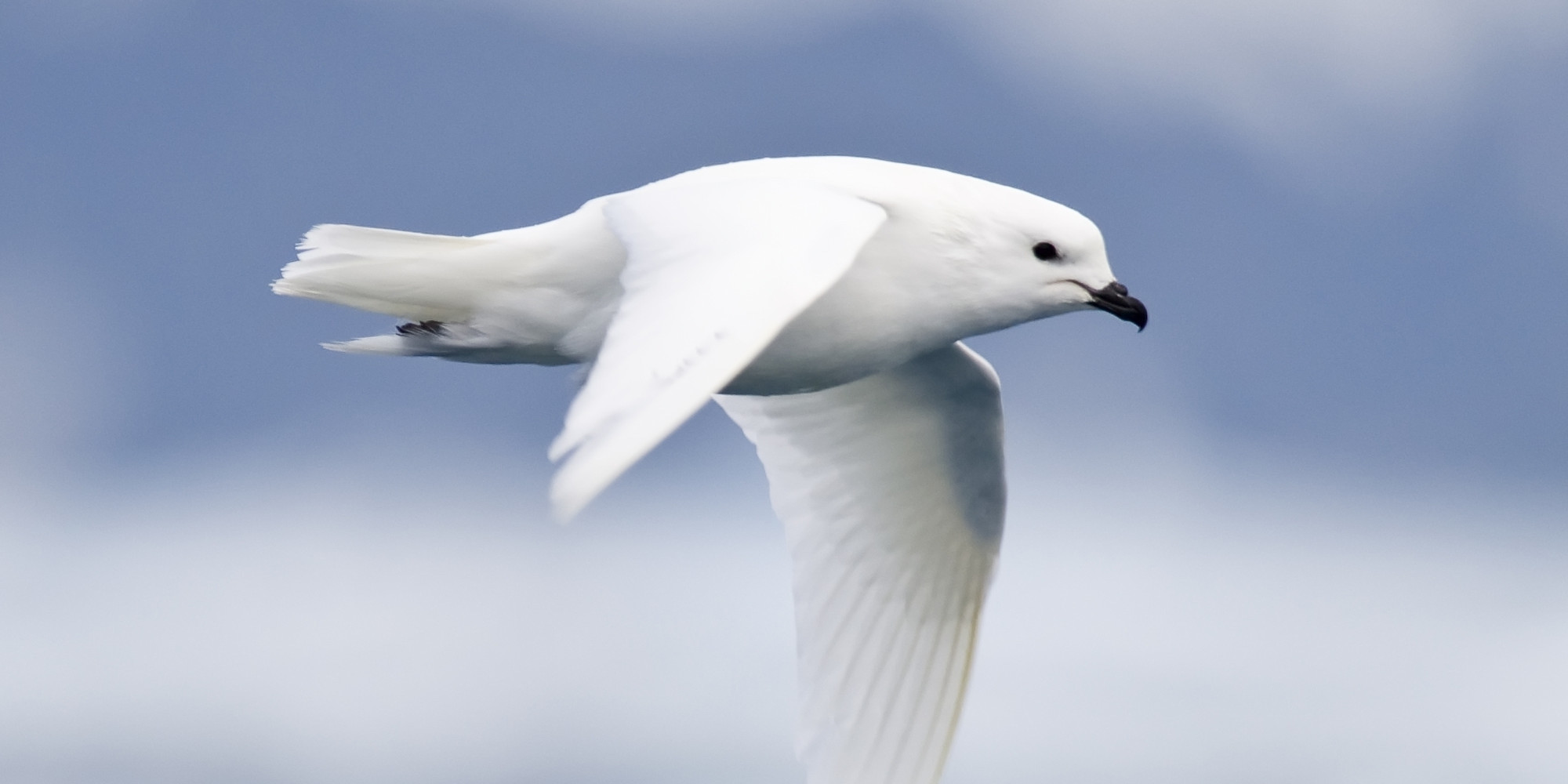
Snow petrel (Pagodroma nivea)
Named after its snowy white plumage, this small petrel easily blends in with its surrounding environment, despite its dark eyes and blue-gray feet. It is one of only three species of birds that have been found at the South Pole and prefers to spend its time perched on icebergs and floes. In flight, snow petrels have an erratic pattern.
Aside from breeding on the Antarctic continent, snow petrel colonies have been found in South Georgia and the South Sandwich Islands, with nests created in shallow depressions lined with pebbles. A single egg is laid from late November to early December, with partners faithful to one another throughout their lifetime. In addition to feeding on fish and krill, snow petrels are known to feast on dead seals and whale carcasses.
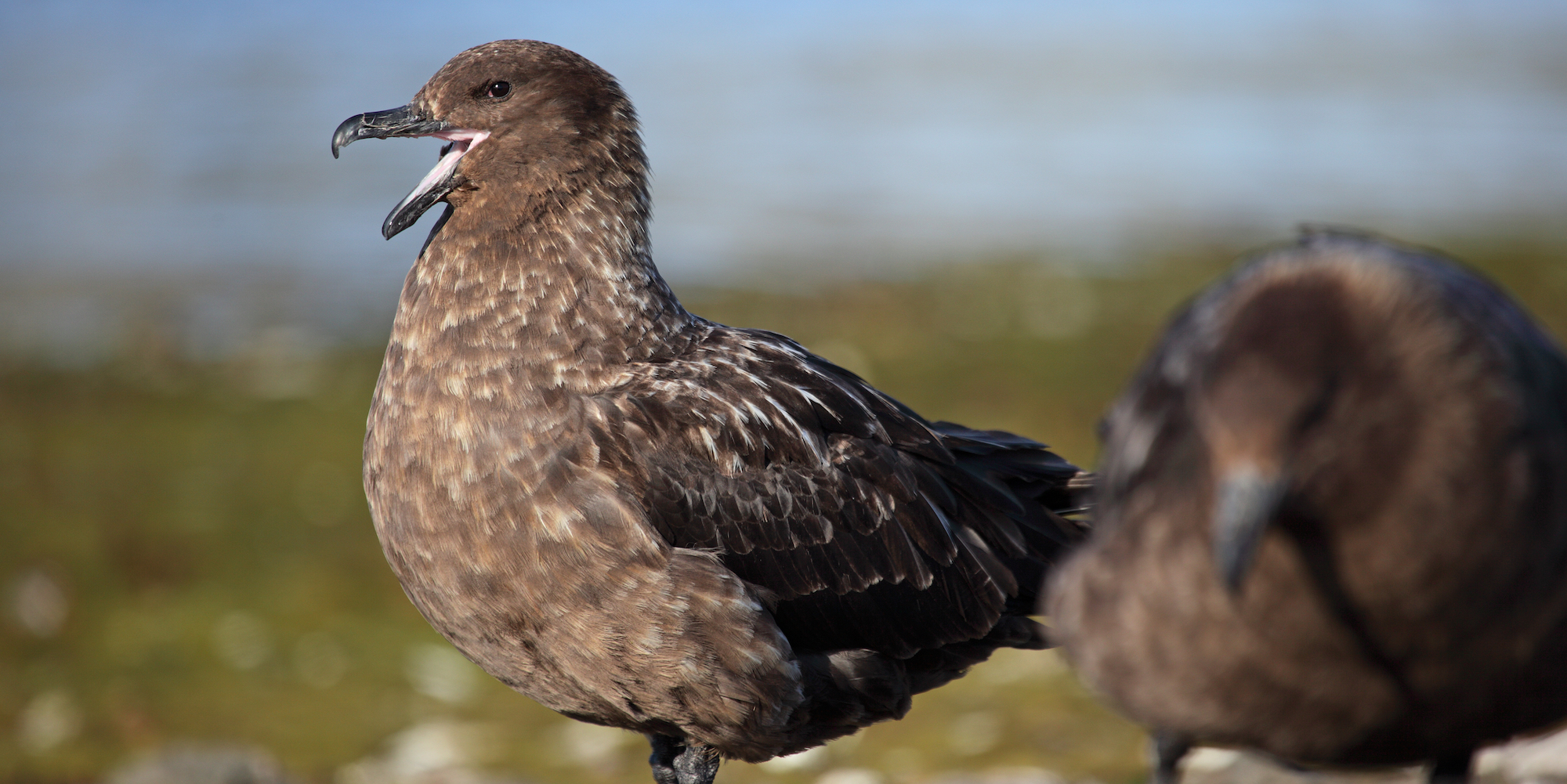
Brown skua (Stercorarius antarcticus)
Also known as the Antarctic skua, this gray-to-dark-brown seabird is distinguishable by its white patches. It is the heaviest species of skua, weighing up to around 5 pounds and with a wingspan of up to 63 inches. Brown skuas feed mainly on fish, which they are known to steal from other birds, as well as hunting penguin chicks and feasting on carrion.
While brown skuas breed in Antarctica, they migrate north for the rest of the year, with many found along the coasts of Australia and New Zealand. Studies have shown that the birds can identify individual human beings and they have been known to form strong bonds with people living in Antarctica for extended periods.
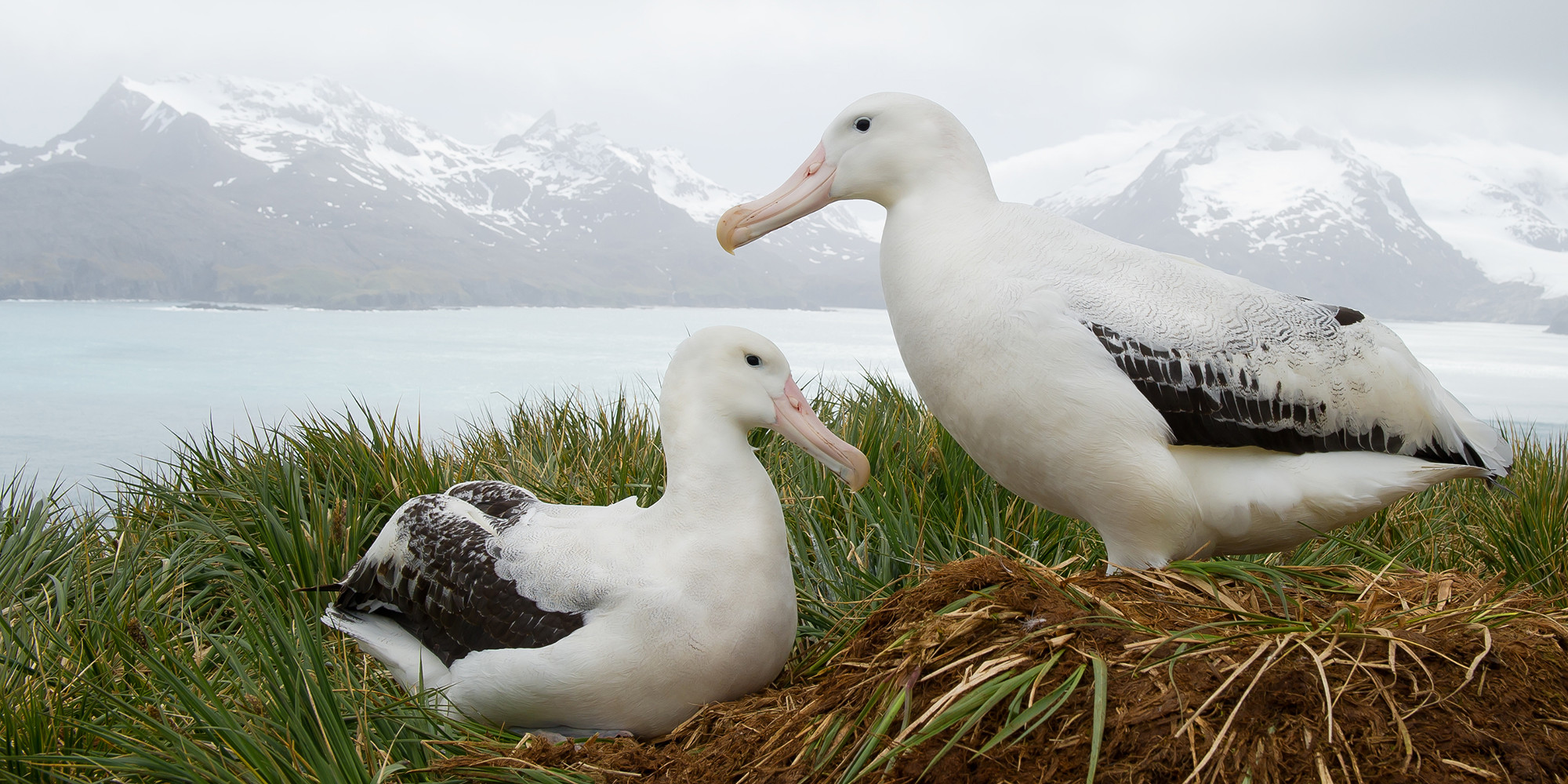
Southern fulmar (Fulmarus glacialoides)
Often referred to as the Antarctic fulmar, this largely gray bird features a white underbelly and distinctive patches on its wings. It breeds on the coast of Antarctica and its surrounding islands before migrating north in the winter months to South Africa, Australia, and New Zealand.
Southern fulmars prefer to nest in clifftop colonies, with a single egg laid each year. Couples court one another while nibbling, preening, and making soft guttural calls. Southern fulmars eat krill, fish, and squid that are plucked from the water’s surface after being scanned from above during flight. They are known to gather in large flocks around fishing trawlers, often accompanied by Cape petrels.

